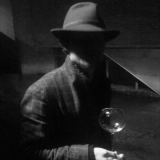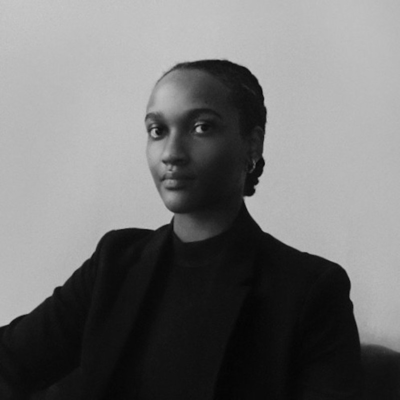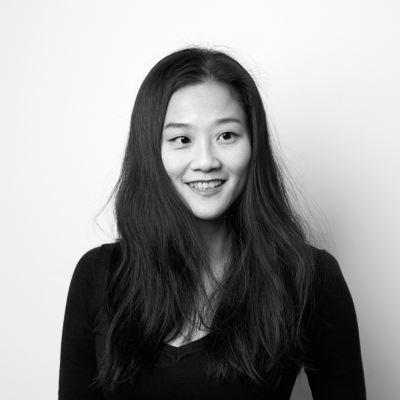It is with much gratitude and admiration that we celebrate the jury alumni members of the Core77 Design Awards.
- All Categories
- A/V & Photography Equipment
- Apps & Platforms
- Branding & Identity
- Built Environment
- Commercial Equipment
- Consumer Product
- Consumer Technology
- Crowdfunding
- Design Concept
- Design Education Initiative
- Design for Social Impact
- Emerging Technologies
- Furniture & Lighting
- Gaming Accessories
- Health & Wellness
- Home & Living
- Interaction
- Lifestyle Accessories
- Open Design
- Packaging
- Personal Accessory
- Robotics
- Service Design
- Speculative Concept
- Speculative Design
- Sports & Outdoors
- Sports & Recreation
- Strategy & Research
- Sustainability
- Tools
- Tools & Work
- Toys & Play
- Transportation
- Visual Communication
Jury Alumni

David Harvey
Wine Importer, Raeburn Fine Wines
2015 Furniture & Lighting Jury Member
David Harvey is a wine importer with Raeburn Fine Wines, and a writer. He works with elite nature-centric wine producers of West Europe, and gets involved with closures, packaging, marketing, buying and sales. He contributes to The World of Fine Wine, the award winning publication, and has recently written an entry for The Oxford Companion to Wine (2015 edition).
He judged at the IWC (International Wine Challenge), the world'd largest wine competition, from 2002-2004 as panel head and super-juror.
In 2004, while working for Frank Cornelissen on Mt. Etna, he created the name 'orange wine' for the renaissance of white grapes processed like red grapes in the cellar, which has since stuck and become the international standard.
His favourite objects include his black Parker 51s, prototypes of Paul Cocksedge's Bookmark and Ideas Tray, a Cannondale Killer V and Klein Attitude, a Herve Pennequin corkscrew by Le Thiers, a Santoku knife by Sakai Takayuki. Etc.
David studied writing at Harvard Summer School, wine at the WSET, and photography at Filton College.
Hanna Nova Beatrice
Editor in Chief, Residence Magazine
2016 Furniture & Lighting Jury Member
Hanna Nova Beatrice is a design writer and Editor in Chief of Swedish title Residence and English language bookazine My Residence. She has been the Editor of a number of magazines, all focusing on design and interiors, as well as edited and written books on design, including the book Behind the Scenes in the Design industry. She regularly holds panel debates on design and have co-curated exhibitions such as 20 Designers at Biologiska (Stockholm 2011) and Norweigan Structure (Milan 2016).

Christopher Specce
Independent Designer & Professor, Rhode Island School of Design
2018 Furniture & Lighting Jury Member
Christopher Specce is a designer and teacher working in Providence, Rhode Island. His practice spans from commercially oriented product design to creating experimental, one a kind of objects. In addition to serving as associate professor in the Department of Furniture Design at Rhode Island School of Design, his professional experiences include projects across the furniture and consumer product industries. Prior to joining the full-time faculty at RISD, he was lead designer at the consultancy Observatory, where he contributed to projects for clients including Herman Miller and P&G.
With a belief that designed objects make an important contribution to culture, he explores the various ways that designers can embed objects with meaning. His studio practice features extensive use of digital design and fabrication tools alongside hands-on work with materials to create works that are at once mundane, delightful, modest, and forthright.
Signe Hytte
Furniture & Product Designer, Signe Hytte
2019 Furniture & Lighting Jury Member
Signe Hytte is a Copenhagen-based furniture and product designer. The essence of her work is simplicity, aiming to create honest and functional objects that improve everyday life. Her goal is the most challenging and rewarding aspect of designing: reducing a piece to its core.
Apart from working with brands like New Works and Menu, she is Head of Design at the Danish furniture and lighting company & tradition. Her work is a regular fixture at the Stockholm, Milan and Cologne furniture fairs, and she has been featured in design and art exhibitions globally.
She has studied Aesthetics and Culture at the University of Aarhus, and she graduated from the Design + Business school TEKO in 2012.
John and Wonhee Arndt
Partners, Studio Gorm
2018 Furniture & Lighting Jury Captain
Studio Gorm was founded in 2007 by John Arndt and Wonhee Jeong Arndt.
As professors in the Product Design department at the University of Oregon, they apply their insightful academic research on culture, history and technology to refocus modern design through the prism of time, exploring the transformation of objects and ideas as they evolve to fit the demands and expectations of modern life.
As designers of functional objects, they draw from their background in sculpture and craft to create works that balance function and aesthetics. Their methods are deeply rooted in the act of physical making where an object’s true form evolves out of an experimental constructive approach to design.
Angie Fang
Co-founder, STUDIO NOWHERE
2017 Furniture & Lighting Jury Member
Angie Fang is a digital artist/designer and a co-founder of Studio NOWHERE. She works with diverse media and cross-discipline approaches to express her world through different art forms including sculpture, audiovisual and interactive installations.
She received her MFA degree from Goldsmiths, University of London, where her research focused on the tension between sound, space and visual elements, and also the subtle experience between the technology synthesised and the reality. Most of her works attempt to represent pseudo-natural, material sensory environment, yet with characteristics of the computational and digital at its heart. Her works has been exhibited 2015 London design week at Victoria & Albert Museum, UK.
Sunshine Thacker
Founder, Sunshine Thacker Studio
2024 Furniture & Lighting Jury Member
After studying Architecture and Land Development at Texas A&M University, Sunshine spent 15 years navigating lawyers, liars and leeches before returning to her first love - clay. Sunshine's background in architecture informs her always curious - artistic and design practice. Sunshine believes in taking risks, in pushing boundaries. She’s always asking, “why?” Or more often, “why not?” Her work has been featured in Architectural Digest, Dwell, Surface, Wallpaper and Elle Decor among others.

Thom Fougere
Founder, Thom Fougere Studio
2018 Furniture & Lighting Jury Member
Thom Fougere Studio was founded in the fall of 2015 in Winnipeg, Canada. The studio works within various fields of art and design, but with a focus on furniture and products for the home. All projects are characterized by careful research into materiality, history, aesthetics, and functionality. The studio offers full creative direction, furniture and interior design services.
Thom Fougere (1987) studied architecture at the University of Manitoba before working in furniture and product design. In 2011, after his studies in Architecture, he was appointed Creative Director of Canadian furniture design house EQ3 at the age of 24. There he initiated a rebranding of the company including a transformation of the product line, graphic design, photography, interiors and the architectural design of stores. Thom Fougere continues to investigate how we live and interact with objects in our homes, creating pieces that are both subtle and archetypal in form. His works have been shown internationally at the design fairs in Milan, Stockholm, New York, and Toronto.
Tariq Dixon
Co-founder, TRNK NYC
2021 Furniture & Lighting Jury Captain
Tariq Dixon founded TRNK in 2013 as a destination for fellow design enthusiasts seeking rarefied products in a more approachable setting. A creative strategist and product designer, he’s motivated by the role designed environments play in shaping our interactions, memories, and experiences. His work has been featured in NY Times, The Wall Street Journal, and New York Magazine, to name a few. Tariq is originally from Baltimore, a graduate of Harvard College, and has called New York City home for more than ten years.

Josh Itiola
Designer and Planner, Vitsoe
2021 Furniture & Lighting Jury Member

Randall Jones
Interior Designer, Yabu Pushelberg
2021 Furniture & Lighting Jury Member
Randall Jones is an interior designer at Yabu Pushelberg and adjunct professor at Parsons School of Design. She is an alumna of Howard University and received her MFA in Interior Design from Parsons School of Design. She founded Obsidian, the black student design organization at Parsons in the Fall of 2018. She also serves on the Parsons Committee on Equity, Inclusion, and Social Justice. Randall is committed to working to help expand the pipeline of students and professionals that are under-represented in the design industry. Currently, her work focuses in luxury hospitality, retail, and residential design. Prior to interior design, Randall spent 7 years working within the advertising and marketing space as an Art Director.

Shu Wei
Founder, ZaoZuo
2016 Furniture & Lighting Jury Member
Shuwei was born in 1981 in China. She studied MBA at Stanford University Graduate School of Business in 2007-2009. As a serial entrepreneur, she has 12 years intensive experience of marketing, design, product, technology and investment. In 2014, she founded Zaozuo, a lifestyle brand that combines global design and domestic manufacturing to present the decent urban lifestyle for new Chinese middle-class.

Zhang Zhoujie
Founder, Zhang Zhoujie Digital Lab
2017 Furniture & Lighting Jury Captain
Zhang graduated from Central Saint Martins Art & Design College in London, and is a member of the Architectural Association School of Architecture. He established Zhoujie Zhang Digital Lab in 2010. He is a pioneer in the realm of digital creativity.
His work is known for being independent, experimental and futuristic. Zhang believes that objects in the digital world can grow and morph much like things found in nature, and he is dedicated to discovering and exploring the methods within these transformations. His work mainly focuses on the simplicity of logic, variety and unpredictability, which is based on his understanding of nature.
His collections have been exhibited widely around the world and selected by museums as well as individual collectors. His work has appeared in mainstream media such as Wallpaper*, the New York Times, and Vogue.